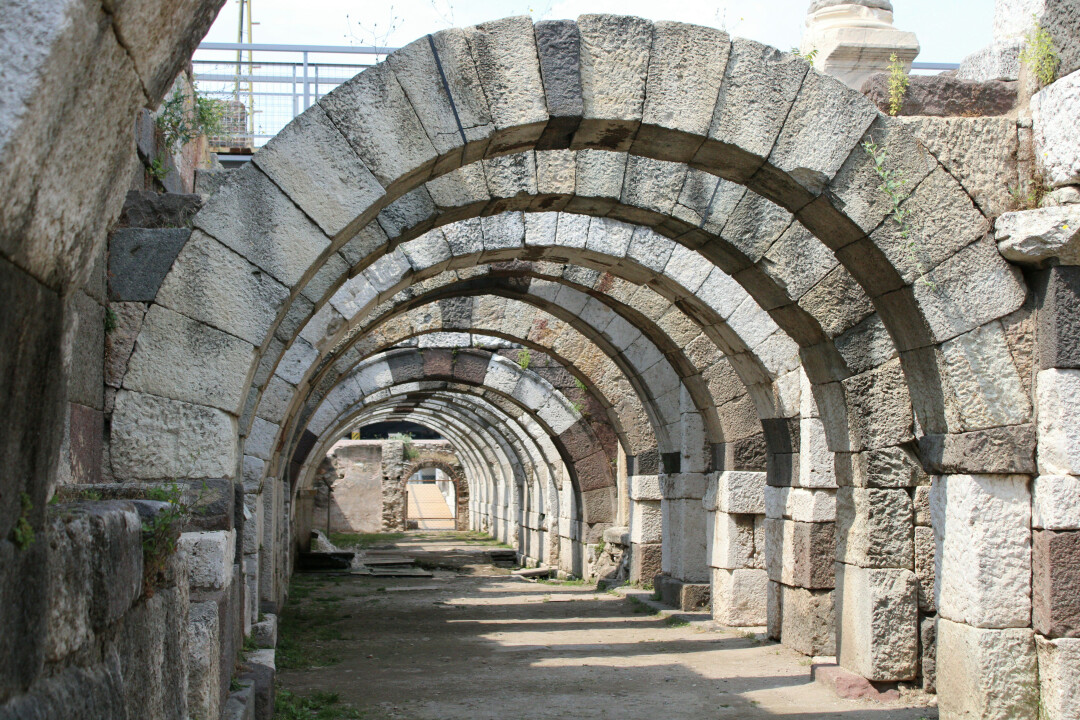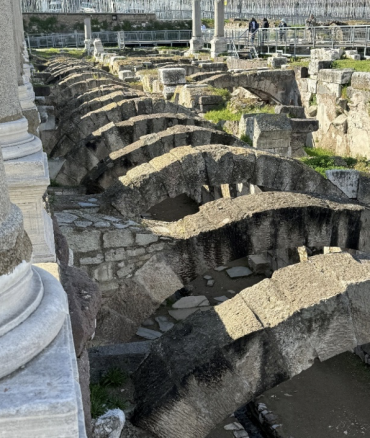
by Leigh Ann Dilley on July 14, 2024
Read Revelation 2:8-11
The second letter to the church in Revelation is addressed to Smyrna. Smyrna, a modern-day Izmir, is located 35 miles up the coast due north of Ephesus. The foundation of Smyrna is tied to Alexander the Great. The city produced all kinds of major commodities and because it was a seaport city, it was one of the most prosperous cities in Asia, boasted as the "pride of Asia." During Roman times, it would have been a rival city to Ephesus. Smyrna held the rights to import and export Myrrh, a burial fragrance. Egypt embalmed bodies for the afterlife, so you can imagine the demand for Myrrh.
The letter to Smyrna opens with words "from him who is the First and the Last, who died and came to life again." The reference to life and death could be a link to the importance of the Myrrh industry. Jesus was gifted with Myrrh at His birth, and the women were prepared to anoint His dead body with Myrrh on the morning of His resurrection. In addition, there was a lot of folklore and literature about Smyrna being a city that was dead and brought back to life many times by either earthquake or war.
One of the most beautiful things about the Smyrna was the Agora, or marketplace.


Considering the splendor and wealth of this city, Jesus' "I know" statement is interesting. "I know your affliction and your poverty — yet you are rich! I know the slander of those who say they are Jews but are not..." Smyrna was a city that was known for Christian suffering. False rumors and gossip about Christians created wounds of slander and poverty. As in so many of these other cities, Christians' businesses were boycotted and even vilified. Some Christians had trouble finding employment. The Jews put a high value on family, so when Christians called each other "brother and sister," it was considered an insult and "anti-family" to their family of origin. It was painful for Christians to endure.
Citizens of Smyrna were required to drop incense into a pot that burned before a bust of Ceasar, symbolic of the acknowledgment of Ceasar as Lord. Christians already had their Lord: Jesus. So, when they refused to participate, they were accused of being unpatriotic. It was countercultural to be Christian in Smyrna. The church had enemies. Jesus encouraged the church by telling them they were "rich" in God.
Jesus warns them not to be afraid of what they were about to suffer. The suffering would last a short time: 10 days. Some would be thrown in prison, tortured, and suffer horrific deaths in the stadium with lions in front of many people. Others would be burned at the stake. The most famous bishop persecution was Bishop Polycarp around AD 156. Polycarp refused to worship the emperor. He was sentenced to death by burning at the stake, but when the fire did not consume him, he was killed by a sword.
The letter closes with "those who are faithful to the end will receive a crown of life...and will not be harmed at all by the second death." The second death is referenced at the end of Revelation after God's judgment and is described as a lake of fire. Interestingly, a crown was depicted as a thing of prestige. Ceasar's image wears a crown as a coin during this time. Crowns were worn in Smyrna during celebrations and games. Crowns of garland were placed on the winners of the games. Christians were well acquainted with crowns being a symbol of victory. The victorious "crown of life" promises the gift of eternal life, the ultimate victory.



